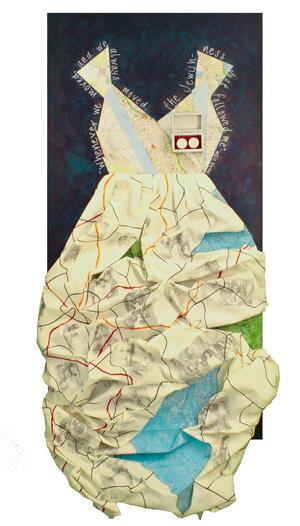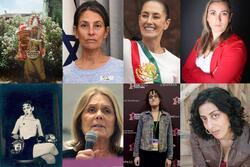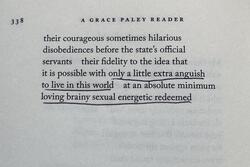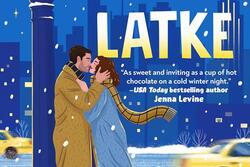AdDRESSING Women's Lives: Translating Interview into Art
The following is a piece by Ethan Grossman, a high school student at the Weber School in Atlanta. As part of a project called AdDRESSING Women's Lives, created by Barbara Rosenblit and Sheila Miller, Ethan interviewed Millie Rotter Kinbar and documented her oral history in a multi-media work of art, revealing her character and life experiences through the metaphor of a dress.
There’s something beautiful about sharing a memory, a personal, even obscure moment in time that happened long ago. What struck me about my interview with Millie was that she did it with such grace. Millie is a natural speaker who can take the most arcane thing about her life and turn it into something that is relevant, profound, and textured with nuance. Take, for instance, her interest in handwriting analysis. When asked about one of her pastimes, Millie responded without hesitation, “I became interested in handwriting analysis and I became interested for me, because when I know about me, I know about you and you in the sense that we’re all frail, and we develop little defenses to help ourselves through life.”
Millie and I talked about a lot of things—the interview lasted a good two hours—and during this time, pieces of her life just spilled out. I had a hard time keeping up with Millie; she recounted her journey in unfiltered, poignant detail. I listened to the stories about growing up in Brooklyn, living in poverty, the challenge of having parents who were not only two generations older than you (her mother was close to fifty when Millie was born), but also who still spoke Yiddish, who were still thoroughly European, and trying to assimilate, to shift into the fabric of American life. While hearing all of these stories, I realized the importance of sharing memories. It forms a connection between people that transcends time or age or race or gender while letting you view history through a personal lens. The interview process allowed these memories, moments previously fogged by the frigidity of time, to reemerge and be experienced once again.
Translating the interview into an art piece was the most challenging part of the project. I decided to use the map theme after toying with ideas of travel, motion, and exploration. The maps seemed to be the most simplistic and potent way to visually represent Millie’s life, a life that was—and continues to be—an indefatigable adventure. I underestimated the amount of work that needed to go into the dress. After making some enemies over at AAA, I brought a stack of maps from around the world to the studio and began cutting different shaped strips. My anal-retentiveness, coupled with the fact that cutting maps into irregular triangles to perfectly fit the form of a bodice is meticulous work, made the construction of the top half of the dress a time-consuming process. But the work was just beginning. I decided to use fabric for the bottom of the dress because it is a malleable art medium—it can be shaped, painted and imprinted easier than paper. I finished the bulk of the dress at home—painting the abstract map and transferring the pictures of Millie onto the muslin (a process that I’m sure accounted for the loss of a good portion of my brain cells).
What struck me most about the interview process and the making of the art piece was how each connected with Mrs. Rosenblit’s Jewish Women in Modern America class while taking it to the next level. I relished the opportunity of getting a private and delicate account of history through the eyes of someone who lived it, something you can’t get in a classroom. The interview and making of the dress resonated with me because they took what I had learned in the classroom, history that seemed distant and intangible, and brought it to life.
To learn more about the AdDRESSING Women's Lives project, visit JWA's Best Practices. See more student work in our Flickr photoset, displayed below.
| ||||||







What a beautifully written expression of what this project meant to this young man. His teachers should be pleased that the class and the project made such an impression. I was touched by the piece.